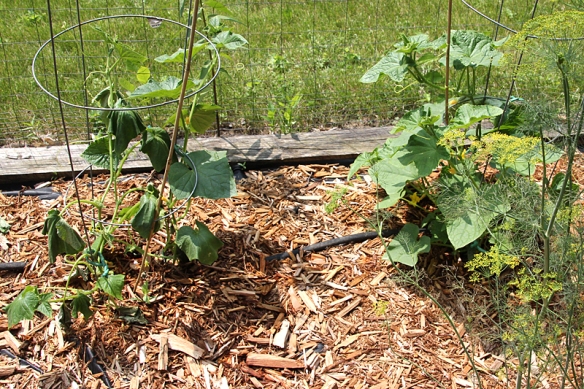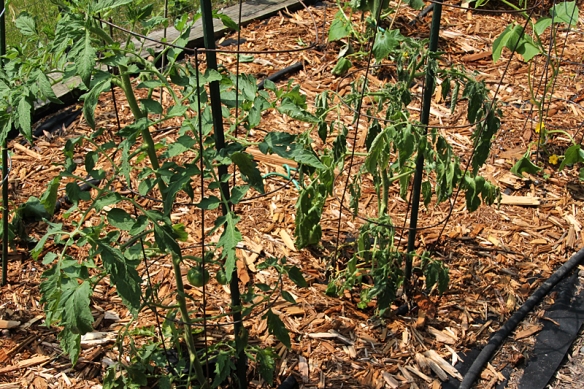This is the third year in a row that I have failed at raising cucumbers and tomatoes. In previous years, the tomatoes have suffered through fusarium wilt and a squash borer moth that lays eggs in the cucumber vine stems. (See an earlier post on the “wasp moth” for more details on this pest.) But this year, perfectly healthy plants have just wilted over the course of one day with no apprarent cause.

The cucumber plant on the left looked fine yesterday, but is wilted this morning. Plant on the right is still looking healthy so far.

The same thing is happening here, but the tomato plant on the right has been looking poorly for several days and today is completely wilted, while the tomato plant on the left looks fine.
In addition to checking out my soil moisture, I also checked the cucumber vines for the presence of a bacterium that causes wilt. Cucumber beetles that lay their eggs and feed on the young stems and leaves of the plants harbor the bacteria in their gut and inject it into the plant stems as they feed. At high density, the bacteria then clog up the plant vessels that transport water, so the plant wilts. I tested for the presence of the bacteria by cutting the stems of wilted plants and squeezing out the xylem and phloem — no milky, sticky exudate appeared, so I don’t think bacterial wilt is the cause either.
Anyone have any ideas about what is going on here? I think the only thing one can do about this is to not use the garden space for a couple of years until the soil biota that are causing the problems disappear.




